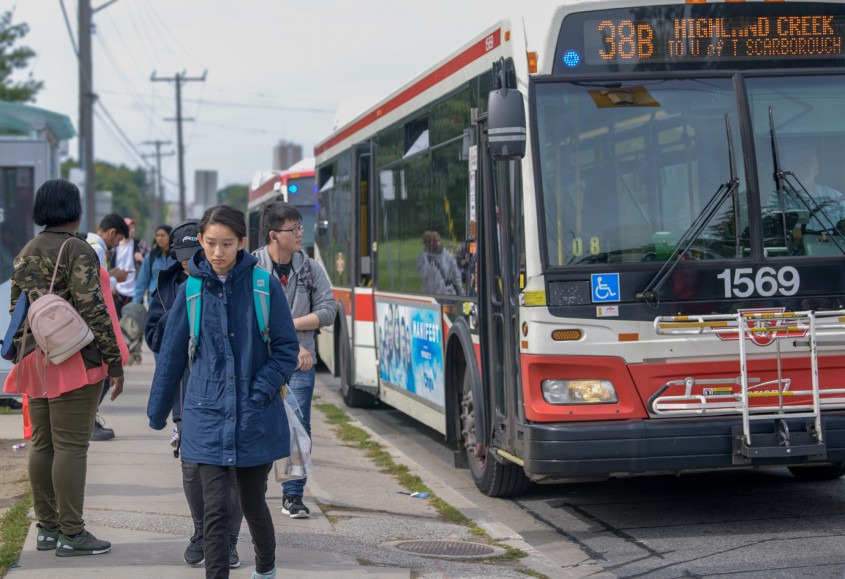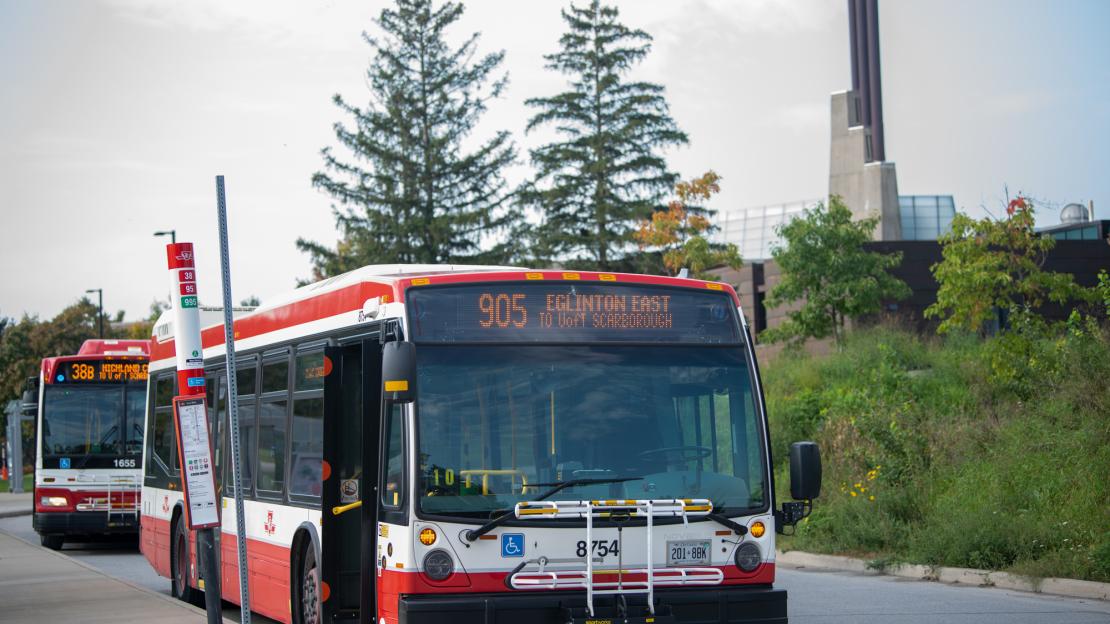Over the past decade, through years of plans and promises, public transit in Scarborough has remained largely unchanged, other than increased bus services.
As the municipal elections loom, candidates and community members are at a cross-road on what should be done.
Writer Alexa Battler spoke to experts and students on what they want to see from transit plans for Scarborough.
Improved buses
In a study earlier this year, Steven Farber, an assistant professor in the Department of Human Geography, discovered that the time students take to commute to campus could have a serious impact on their education.
Farber found commuting time influences how many days a student will go to campus, whether they participate in extracurricular activities and how they pick their courses, often in an attempt to reduce the days needed to commute to campus.
“If you’re missing out on courses or not really achieving your highest level of course preference because you’re constrained by transportation, I think that has a significant bearing on your educational outcome,” Farber says.
Farber says improving quality of life should be a major goal for transit in Scarborough. This, he says, can be done quickly and cost-effectively by improving the existing rapid bus network.
Buses should have dedicated lanes on the busiest Scarborough roads, he says. He also recommends giving buses signal priority, to get through intersections faster and prevent delays.
“This comes at a cost of taking away mobility and speed of other road users,” he says. “But currently, why are we making the poorest people who are travelling in the most sustainable way pay the biggest comfort and time cost of anyone in the region?”
A Light Rail Transit system
Andre Sorensen, a professor in the Department of Human Geography, says Scarborough’s transit challenges would be best addressed with a network of Light Rail Transit (LRT) lines.
In a 2015 study, Sorensen and Paul Hess, associate professor in the Department of Geography and Planning at U of T St. George, compared proposed options to improve Scarborough transit. They found the LRTs outperformed a subway extension and an expanded Go Transit line.
“The LRT still seems by far the best option for Scarborough,” Sorensen says. “In terms of being able to fairly quickly deliver a significant improvement in rapid transit and reach a lot more people, that still seems to be the way to go."
Sorensen says the Eglinton East LRT fits these goals. The proposed LRT vehicles can carry three times more passengers than a bus and would travel on right-of-way rails separate from traffic. They would also have priority signaling at intersections and are entirely electric.
He adds that while the commute from downtown Toronto to U of T Scarborough would be a little faster via LRT, the major benefit is in reliability and comfort. Students would also not have to transfer from subway to bus at Kennedy Station.
“That’s also really significant in terms of the quality of the ride,” he says. “If you are able to just sit in the same place the whole ride, that means that you can actually focus on getting some reading done or whatever you’re doing.”

Affordability
Hana Syed, vice-president external for the Scarborough Campus Students’ Union (SCSU), says improving transit for students means making transit options more affordable.
Syed questioned candidates on their plans at the mayoral transit debate, co-hosted by the SCSU and held at U of T Scarborough.
“Students are frustrated by public transit’s lack of reliability, it is often too slow and or inconvenient,” she says. “It is especially inconvenient and expensive for these students who have to pay extra fares when crossing over municipalities.”
Syed and the SCSU are lobbying for a U-pass, a discounted transit fare allowing unlimited travel over multiple transit agencies, such as the TTC, DRT and GO Transit.
“U of T Scarborough is a commuter campus. Scarborough is a unique part of the city that has historically been neglected in transit accessibility and planning,” she says.
Reliability
Bobby Hristova says catching a bus is often a gamble. In his experience, unreliable service is a major issue for student commuters.
“We have Presto and yet we’re pressed on time,” Hristova says. “One thing we could do is add more frequent service and update what we have now."
Hristova, a fourth-year student in the joint journalism program, brought attention to this struggle in a news segment on CityTV ahead of the provincial elections. He interviewed several student commuters with similar frustrations for the piece.
Hristova commutes from Pickering, and says the farther students are from Scarborough, the harder it is to navigate late or missing busses.
Overcrowding is another key issue for Hristova. He says crowded vehicles hinder students’ ability to be productive while commuting. If he is unable to get a seat, he cannot use his laptop, and “there’s only so much you can actually do on your phone.”
“Whatever they need to do, they need to do it now, because students are going to be running Toronto and running the province eventually,” he says. “Let’s make our lives easier now so we can thrive.”
